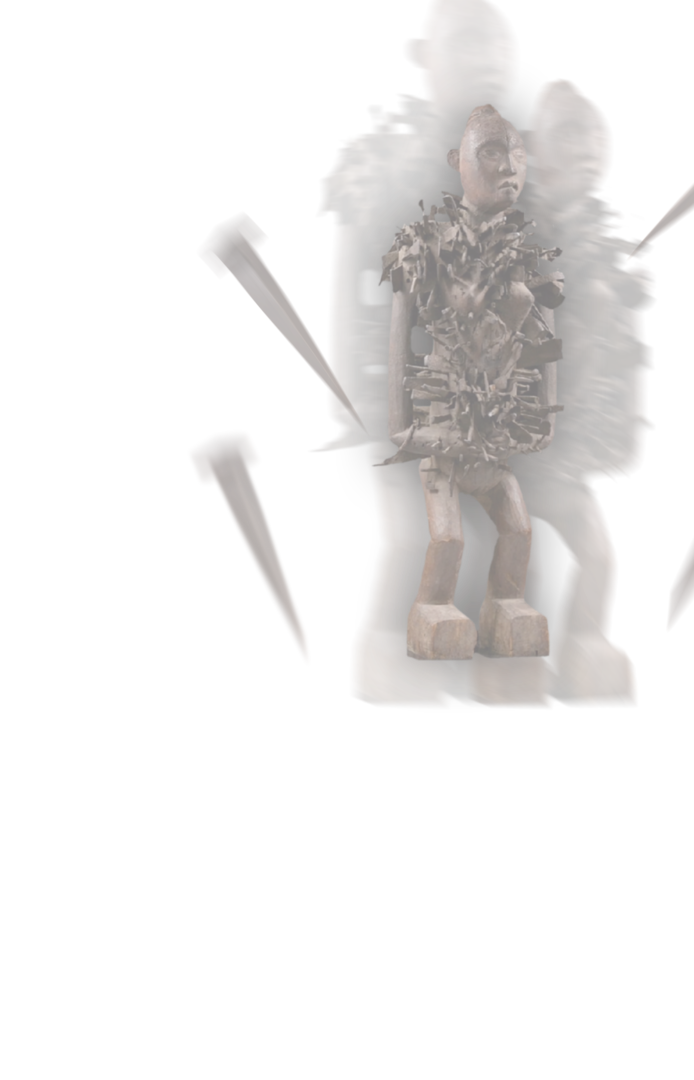
Ritual Sculpture - Invocation
Ritual sculptures act as a bridge between the living and the spiritual worlds. The most elaborate sculptures were found in complex states, typically kingdoms, while simpler societies tended to produce more abstract works. More than objects of worship, sculptures are repositories of spiritual power and serve as conduits for communication with an invisible world.
With the help of ritual specialists, individuals could attain varied goals when interacting with these figures––speaking with ancestors, ensuring fertility, seeking protection, finding guidance for important decisions, and uncovering underlying causes of misfortune. To ensure that the power of these figures was maintained, communities regularly engaged in sacrifices and incantations, including offerings and libations. Whilst most communities in Central Africa sought power and knowledge from clan ancestors, certain groups––famously the Kuba––favoured non-human spirits, invoking instead animal or mythic spirits.
Sculptures in this section display a wide range of forms and styles: adorned with embedded metal pieces; decorated in ornate and elaborately stylized manners; or strikingly simple, displaying abstract, geometric patterns.
With the help of ritual specialists, individuals could attain varied goals when interacting with these figures––speaking with ancestors, ensuring fertility, seeking protection, finding guidance for important decisions, and uncovering underlying causes of misfortune. To ensure that the power of these figures was maintained, communities regularly engaged in sacrifices and incantations, including offerings and libations. Whilst most communities in Central Africa sought power and knowledge from clan ancestors, certain groups––famously the Kuba––favoured non-human spirits, invoking instead animal or mythic spirits.
Sculptures in this section display a wide range of forms and styles: adorned with embedded metal pieces; decorated in ornate and elaborately stylized manners; or strikingly simple, displaying abstract, geometric patterns.
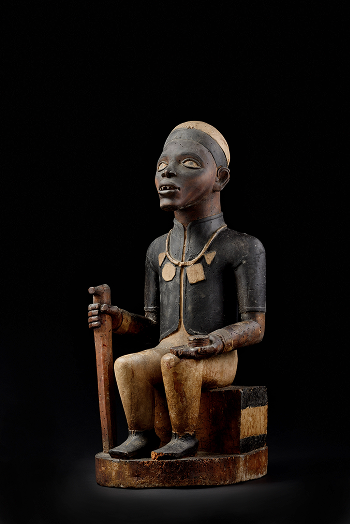
Polychrome Grave Figure
Pigments, wood
Yombe, West Central Africa
Late 19th century
Yombe, West Central Africa
Late 19th century
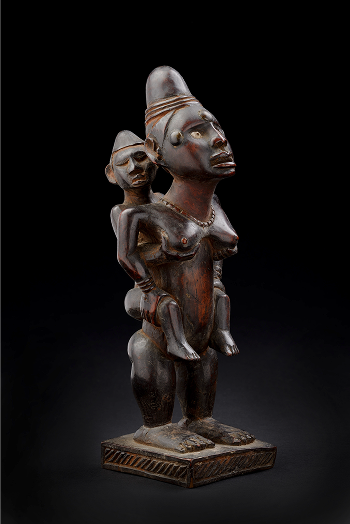
Figure of a Woman with a Young Girl on her Back
Metal tacks, porcelain, tukula, wood
Vili, West Central Africa
Late 19th century
Vili, West Central Africa
Late 19th century
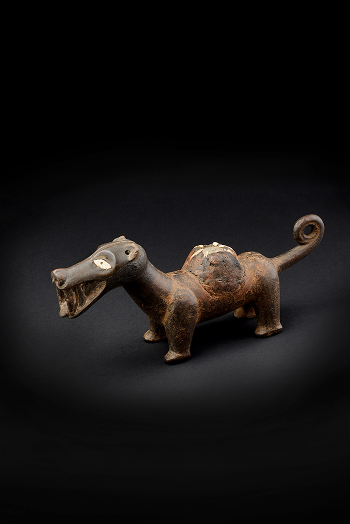
Nkisi Figure of an Empowered Dog
Animal teeth, kaolin, mirror, porcelain, resin, tukula, wood
Kongo, West Central Africa
Early 19th century
Kongo, West Central Africa
Early 19th century
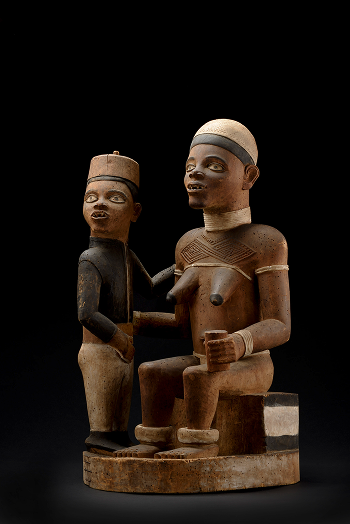
Figure of a Seated Lady Nudging a Standing Boy
Pigments, wood
Yombe, West Central Africa
Late 19th century
Yombe, West Central Africa
Late 19th century
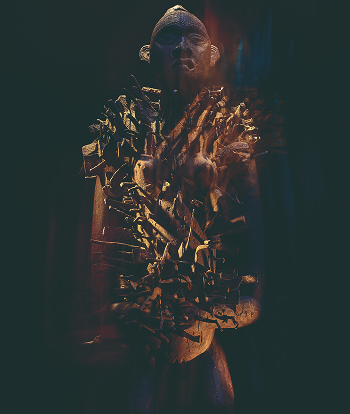
Female Figure with Iron Decoration
Iron blades and nails, wood
Manyanga, West Central Africa
Mid-19th century
Manyanga, West Central Africa
Mid-19th century